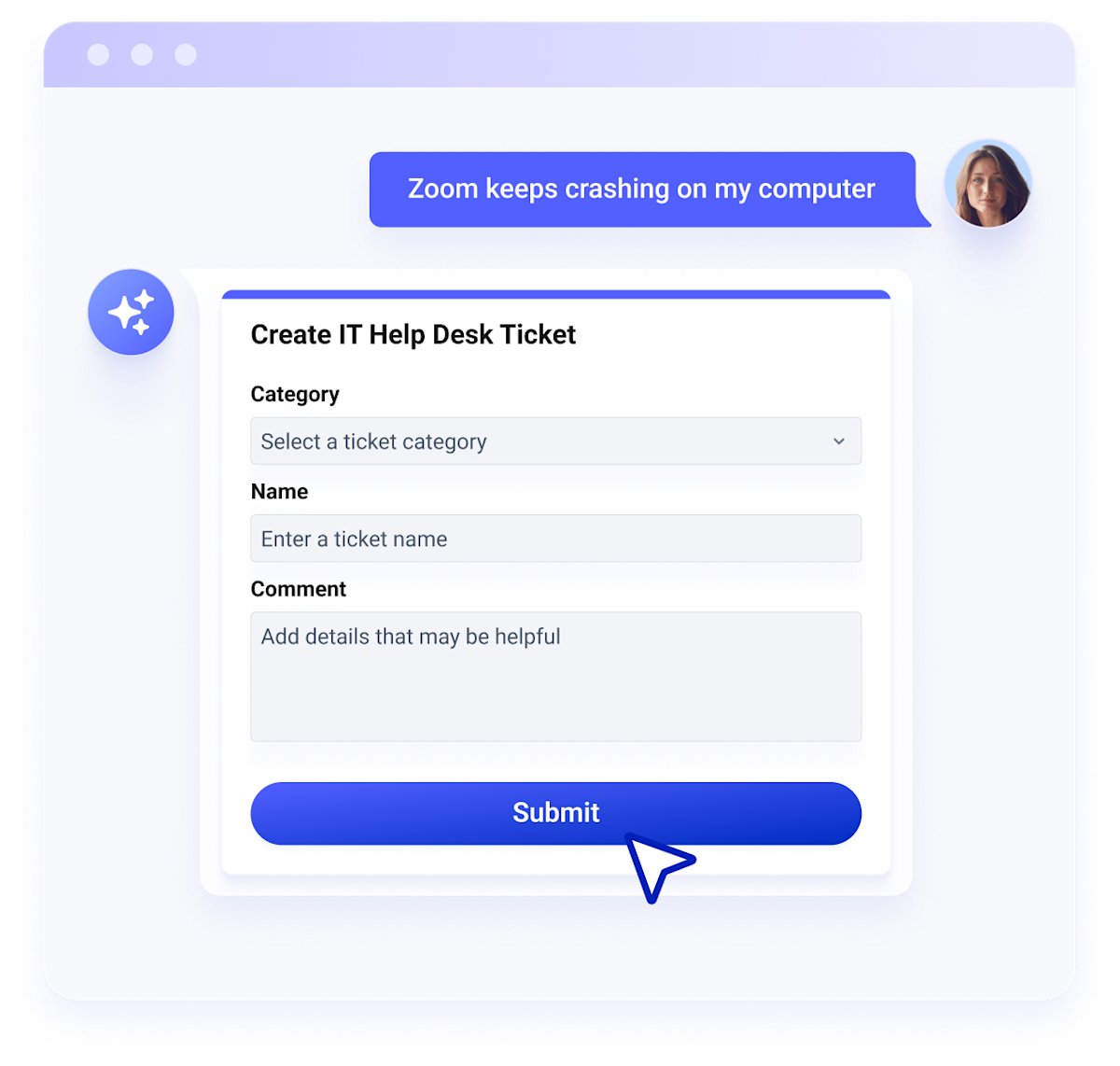What is an enterprise virtual assistant?
When you hear the term “enterprise virtual assistant” it’s easy to jump to a few conclusions, like “that sounds complicated,” “they’re probably a fad,” or “my organization isn’t ready for advanced technology like that.”
We’ll address those assumptions in a second, but first let’s start at the beginning. What even is an enterprise virtual assistant?
A review of industry resources like TechTarget will tell you that virtual assistants are application programs that can understand natural language voice commands to assist users in answering questions and completing tasks. If that doesn’t sound familiar, you probably recognize them in their more common consumer forms, Alexa (Amazon), Siri (Apple), and Cortana (Microsoft) – the personal virtual assistants who are always on standby in your own lives to help make things easier.
But this technology is one of many names, sometimes referred to as an AI Assistant or Enterprise Copilot. Regardless of the terminology, these assistants are bringing power and utility into the workplace.
Enterprise virtual assistants in the workplace
When you think about how virtual assistant technology has already simplified our personal lives in a million different ways, the implication of what it could do for our work lives is mind boggling. Simple commands such as “clear my schedule for Friday,” or “book a meeting next week” would take seconds rather than minutes, and answers to common questions, like “how much vacation time do I have left?” or “what’s for lunch in the café this week?” could be found almost instantaneously.
The number 1 use case for chatbots is to get a quick answer to a query. (Source: Drift)
The good news is, that kind of enterprise virtual assistant technology already exists and is being used now to drastically simplify the workday for employees – it’s just implemented a little differently in the workplace.
While enterprise virtual assistants still help users answer questions and complete tasks, the big difference from their consumer counterparts is that they don’t generally make use of voice commands. Voice technology is just too challenging in offices. Between the background noise and privacy concerns (not to mention simple office etiquette) being problematic, enterprise virtual assistants have found much more success using natural language processing (NLP) and artificial intelligence to assist employees in the form of chatbots and intuitive user interfaces that are accessed on mobile apps and web browsers. They provide the same high levels of utility but are much more suitable for the work environment.

Are enterprise virtual assistants difficult to implement?
So let’s get back to the earlier questions. Are enterprise virtual assistants/chatbots complicated? Yes -- if you want to get them right.
Building a chatbot that can effectively help employees offload common questions and tasks is nearly as much art as it is science. Take this scenario for instance: a U.S. worker in your organization would ask “How much vacation time do I have left?” A worker from your EMEA office, however, would ask how much holiday time they have remaining. Chatbots have to be built to anticipate issues like that.
There’s a lot that goes into a successful chatbot project so organizations interested in implementing one should do their homework before they get started – or better yet, work with a partner who specializes in the technology and understands all the nuances necessary to create such a high-value tool.
Are enterprise virtual assistants a useful digital workplace technology?
And how about the fad factor? Will the virtual assistant/chatbot craze ultimately go the way of Palm Pilots and Google glass?
Not likely. According to Gartner, “The use of virtual assistants (VAs) in the workplace is growing.”
The reality is, the use of enterprise virtual assistants is growing everywhere. Chatbots are projected to handle 75-90% of healthcare & banking queries by 2022, and 67% of global consumers had an interaction with a chatbot over the last 12 months.
Virtual assistants aren’t going anywhere. They’re changing workplace dynamics as we speak, so it’s definitely a technology your organization should invest in. You’ll want to start reaping the tremendous rewards of increased efficiency and productivity – not to mention the ability to attract and retain top talent, as soon as possible.
![[gif] chat-to-servicenow-knowledge](http://images.ctfassets.net/z7p73u8c0thn/2TIFHUbteC2gP3gJg9q8Tg/ce22e479a122cc00335dbb5ce61d64aa/chat-to-servicenow-knowledge.gif)
And how about the last question, “is your organization ready?”
Absolutely, and the reason for that is simple -- because you don’t have to do it your own. If fact, you shouldn’t. As we discussed earlier, getting chatbots right is no simple tasks. There’s a lot you’d need to understand about NLP alone for the chatbot to be effective so this is definitely a case where finding a partner who specializes in this kind of technology just makes much more sense.
So what are you waiting for?




